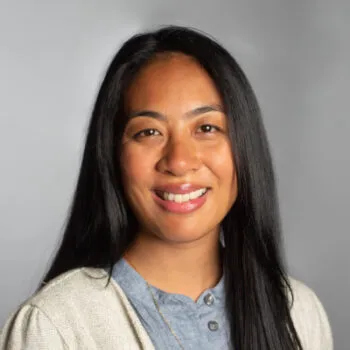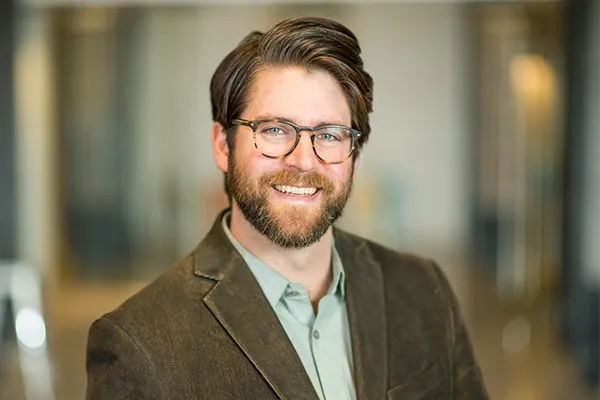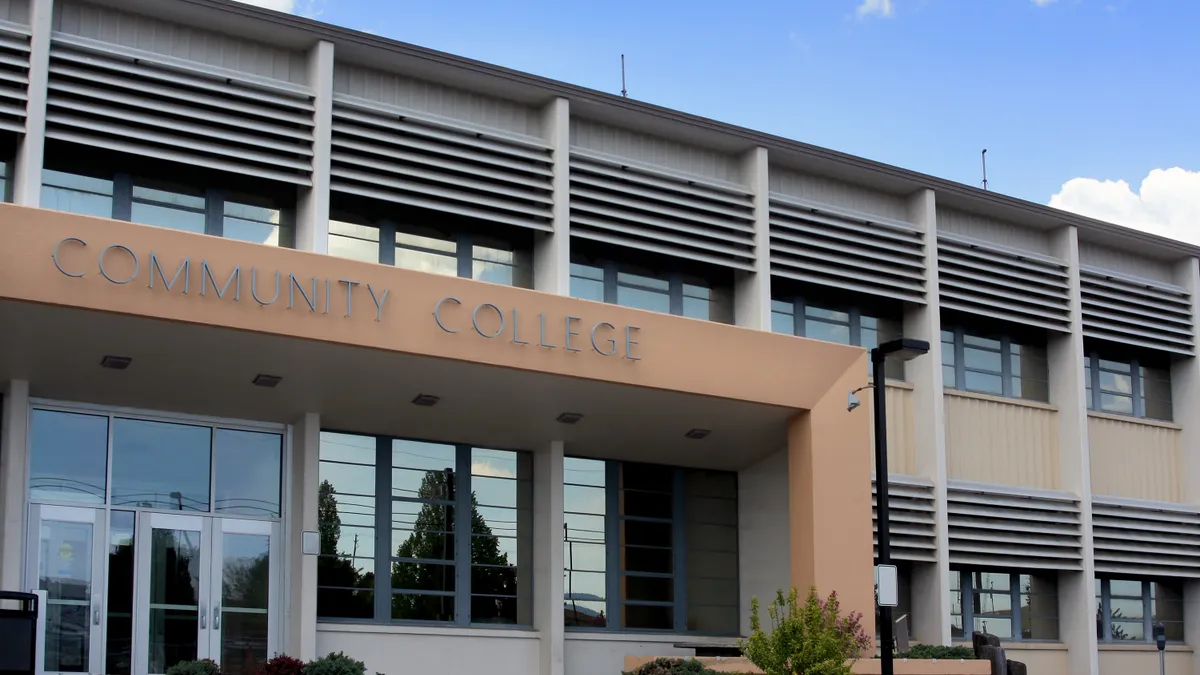Though many students attend community college intending to transfer to a four-year institution, few actually end up earning a bachelor’s degree. Now, researchers are embarking on a two-year initiative to dig deeper into that dynamic, disaggregating statistics by race and ethnicity to find practices that can help colleges improve their outcomes.
The project is a collaboration between the Aspen Institute College Excellence Program, Belk Center for Community College Leadership and Research, College Futures Foundation, Community College Research Center, ECMC Foundation and Kresge Foundation to update a 2016 publication looking at transfer outcomes. Tania LaViolet, director of bachelor’s attainment at the Aspen Institute College Excellence Program, and John Fink, senior research associate at the Community College Research Center, are leading the project. They answered questions about what they hope to achieve.
This interview has been edited for clarity and brevity.
HIGHER ED DIVE: You say that only 11% of low-income community college students transfer and get a bachelor's degree, but we don't know the national and state outcomes for transfer students of color. Why is that?

TANIA LaVIOLET: We know that the vast majority of community college students aim to get a bachelor's degree. Survey after survey, year after year, it's about 80% of entering community college students. What the data show overall is that only about one-third of entering community college students will transfer to a four-year institution, and only about 15% to16%, depending on the year, of that entering cohort will eventually get a bachelor's degree six years later.
When we first started doing these analyses, with the 2007 entering cohort of community college students, the National Student Clearinghouse, who's a partner in this work and provider of the data, did not have enough coverage in the data to disaggregate it by race and ethnicity — enough to do income, but not race/ethnicity.
Now that data is available, that coverage is available. And so part of the reason we're doing this now is to be able to report those outcomes disaggregated by income and by race and ethnicity, in order to shine the light on where there may be inequities. We're also going to be publishing the data broken out by state, so that we can see which states are doing well, which states have some work to do, and where we might be able to learn from those that are doing well, especially for students of color and lower-income students.
How will your research be conducted?

JOHN FINK: This is a two-part project. We were just talking about the first part, which is mostly partnering these three organizations — CCRC, Aspen and the National Student Clearinghouse Research Center — working together, looking at this quantitative data.
But it's a sort of like, “Wait, but that's not all!” What we found in our original 2016 report, and what you typically find, is that even within a state, there's a lot of variation. Some colleges are doing much better than others. And you can look at that in terms of the pair performance — the transfer outcomes between a particular community college and a particular university.
What we're going to do with this updated data is find and identify the best community college-university partnerships across the country that have the strongest transfer outcomes for students of color, and then we're going to reach out and learn from those partnerships: What are you doing that might explain these really strong outcomes for Black and Hispanic students and low-income students?
We're going to do fieldwork. Some sites we'll visit virtually, others in person. We’ll speak to folks at the community college, at the universities, meet the students, faculty, administrators, and really learn and produce this into an updated set of recommendations and findings in this transfer playbook.
How are you going to try to make sure that this research is used by college leaders?
LaVIOLET: Through Aspen, we have networks of literally hundreds of four-year institutions and community colleges, working to advance stronger and more equitable community college transfer student outcomes. We're going to get this research into their hands. It's open-access research. Anybody who is interested in doing this work, this will be available to them.
We’ve found that transfer needs to be led by presidents and senior leadership. We are really going to be targeting this research to senior leadership, so they understand the importance of transfer to talent development, to achieving more equitable access and success for students, and then making sure that they have a roadmap for their campuses to do the work and to support those stronger outcomes.
FINK: After that first playbook, one of the key partners in using that were states themselves. So we anticipate similarly the states being key partners in supporting their institutions.
We're really focused too on producing tools, things like taking our findings and putting it into the format of an institutional self assessment, like a rubric. Or data templates or instructions. We've put those up on our website as Word documents and say, “Please download them, put your own logos on them, change them, but really use this to build your own reform efforts.”
LaVIOLET: What we hope is that in the next edition of the transfer playbook is that institutions across the nation, regardless of context, will be able to find themselves in the research and find some nugget in there that they can apply on their campuses to improve systems for students.
To what extent are the poor transfer rates we're seeing an institutional problem? Students face a lot of barriers in their lives. What is the role of the institution in helping them achieve their goals?
FINK: What we found from the first tracking transfer report was institutional practices really matter. We looked within all these different types of institutions, but then, you see some variation even in similar contexts. When you see all this variation, I think it suggests that what colleges are doing really matters in terms of making a change and improving student outcomes.
There's just all sorts of barriers that are placed along the way of the transfer student experience at the community college, things like the onboarding process and getting connected, not enough support or funding for community colleges. And then, after the point of transfer, barriers in terms of encountering nonreceptive cultures and having an effect on students' sense of belonging.
LaVIOLET: Only a small proportion, from what we can see in the data, of the students are actually transferring, even though they've done their part. So why is that? My hunch is that that is because of the complexity and the challenges and the institutional barriers that John was referencing.
Is there anything else you want to say?
LaVIOLET: Community college transfer can be a catalyst of individual opportunity and mobility. Leaders across higher education are beginning to see its importance in talent development for their local communities, their regions and their states. We hope that this research will help support those efforts, because of the opportunity at hand not just for students, but for our country.





















